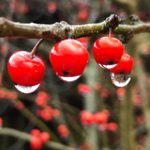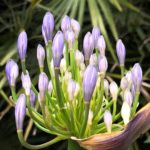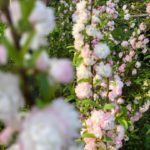Learn to use shallow depth of field

Shallow depth of field
In this part of the series, we are going to get more technical. Sorry, there’s no way around it. Shallow depth of field can be defined as when the foreground image is sharp, and the rest of the image is soft and out of focus.
To understand how to compose and capture shallow depth of field pictures, you must understand how to use your camera to create the effect. Shooting with shallow depth of field is a great way to create interest in your pictures. It sharply focuses your primary subject while blurring the background. It can be a great way to eliminate distracting elements in the picture. Shallow depth of field photography is often used in portrait photography but is very effective in flower photography as well.

Lilly of the Nile
Depth of field, simply defined, means how much of your picture is in focus. If you leave your camera on auto all the time, you’ll find that most everything is in focus. So, the first thing to do is learn to manually set the focus on your camera and get off auto mode. If you are an iPhone user an easy way to create a shallow depth of field shot is to use Portrait Mode. It will create a blurred effect if your subject is not right up against the background. If you use a traditional camera try a wide aperture setting such as f/2.8 or f/4, usually the lowest setting your camera will allow.
The easiest way to create a shallow depth of field photo is get close to your subject without making it a macro image. The closer you can get to your subject the more blurring you will get in the background. Professional photographers use this technique to reduce or eliminate distractions in the background, soften the look or mood of the picture and to emphasize the primary subject.
Once you master shallow depth of field techniques, you can reverse the process and capture long or deep depth of field photos. For deep depth of field photography, set the focus on a background subject and the foreground subject becomes blurred. Practice both techniques and you will become a better photographer, capture more memorable pictures and have more fun.

Deep depth of field
Grab your cameras and start shooting. Remember to manually set the focus, get close and take some test shots to get those shallow depth of field photos.
If you’ve missed any articles in the series you can find them by going to the MCMGA homepage, select MCMGA Blog link and look for the Photographing Flowers Series 1-5.
Written by Cliff Blackerby, July, 2019.